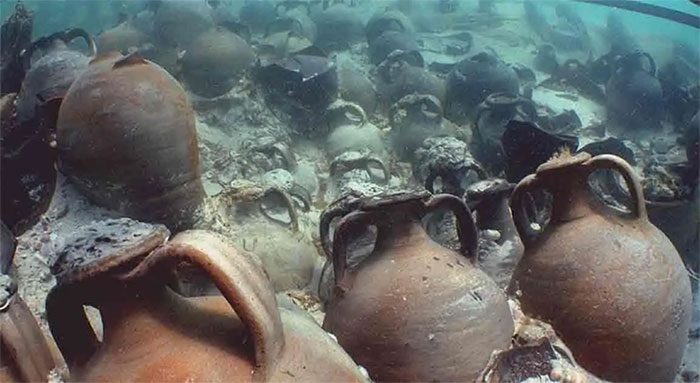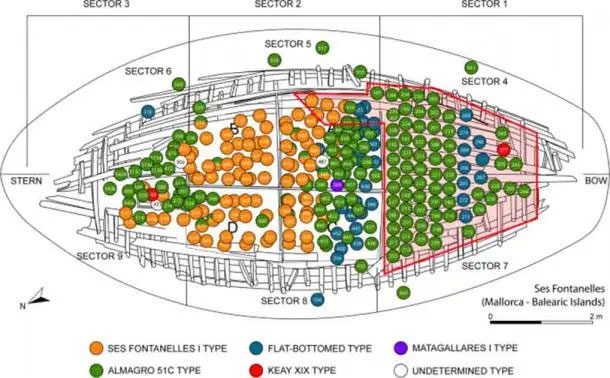Despite being swallowed by the Mediterranean since the 4th century, the artifacts inside the ghost ship of Rome remain remarkably intact.
According to Heritage Daily, a years-long excavation off the coast of Mallorca in the Balearic Islands, located in the Mediterranean Sea, has revealed a ghost ship laden with precious ancient artifacts.
Notably, the research team led by Dr. Miguel Ángel Cau-Ontiveros from the University of Barcelona (Spain) has identified a completely new type of amphora that has never been seen anywhere in the world.

The ceramic jars in the ghost ship have remained intact for 17 centuries – (Photo: Archaeological and Anthropological Sciences).
Amphorae are a type of ancient ceramic jar, tall and bulbous with two handles, used in many ancient civilizations.
These artifacts are fascinating not only for their historical value but also for the wealth of information they reveal about their owners.
According to a publication in the scientific journal Archaeological and Anthropological Sciences, the amphorae found in the cargo hold have been categorized into four groups, three of which were known prior to this discovery.

Diagram of the ghost ship, with the yellow jars indicating the new amphora type – (Photo: Archaeological and Anthropological Sciences).
The most common type is the Almagro 51c, which, according to the ancient labels known as tituli picti used by the Romans, contained anchovy sauce.
These findings are particularly beneficial for archaeologists as they contain information about the contents, origins, destinations, and even the owners.
Additionally, the ghost ship also featured flat-bottomed amphorae used for transporting fruit, another type known as Keay XIX, and a completely new form of amphora called Ses Fontanelles.
This new design is significantly larger and heavier than other types and was used to transport large quantities of vegetable oil.
All analytical data indicate that a owner named Alunnius et Ausonius possessed this ghost ship and possibly an entire fleet, with the primary cargo being a type of fish sauce similar to nuoc mam, along with cooking oil and fruit.
The discovery of this entirely new type of pottery promises to provide more intriguing details, potentially guiding archaeologists to an unknown ancient pottery “village,” where a distinct style of amphora making was practiced.
Moreover, the style of the artifacts could help further understand the origins, destinations, or routes the ship traversed, clarifying ancient trade routes.
Remarkably, although submerged in the sea and only protected by fragile layers of grape leaves, almost all the cargo in the ghost ship has remained intact after centuries.
Some maritime areas are particularly suited for preserving ancient ghost ship structures, including certain regions of the Mediterranean. These are “promised lands” for future underwater archaeological endeavors.


















































